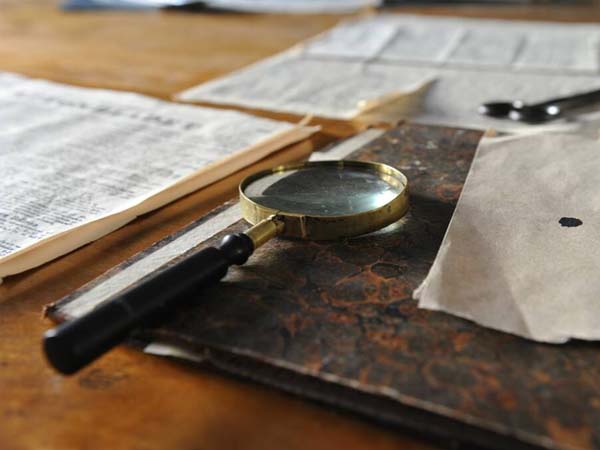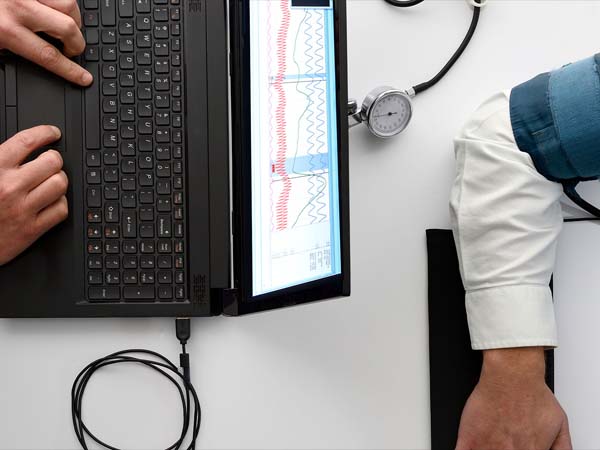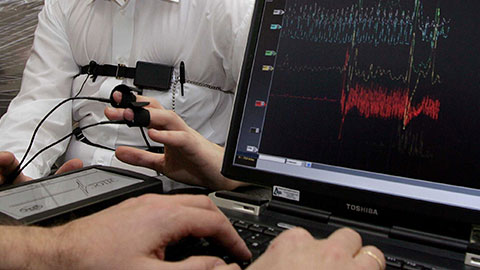Has a lie detector test been on the news much?
How many questions can be asked during a specific issue polygraph test?
What are the stages of a lie detector test?
Is it common to take a lie detector test to address allegations of infidelity?
Is there scientific research that supports polygraph examinations?
There is a small arsenal of research that shows a properly conducted lie detector tests are 90 to 98 percent accurate. More recently a field study was conducted using a specific issue format known as the Quadri -track ZCT or some refer to it as the MQTZCT.
In my opinion, after reviewing a lot of literature on polygraph testing this particular testing technique is the most reliable of the numerous formats out there, if not the best.
There have been 3 field studies conducted using this testing format and all of the studies show very high accuracy rates the research can be viewed at:
The Journal of Physiology and Behaviour Mangan, D. J., Armitage, T. E., Adams, G.C. (2008a). A Field Study on the Validity of the Quadri-Track Zone Comparison Technique. Physiology and Behaviour, 95 (1-2), 17-23
The results of this study showed almost perfect conclusions with inconclusive (no opinion) results removed. This was in line with previous research conducted in 1989. The arguments against the Quadri-Track Zone Comparison Technique in Physiology & Behavior, are based largely on dated articles that examined control question polygraph techniques whose psychological test structures, physiological analyses, and scoring systems are significantly different than those of the Quadri-Track ZCT. Iacono and Verschuere et al. alleged that the Quadri-Track ZCT is biased against the innocent and can be defeated with the use of countermeasures without considering the technique’s unique “remedial inside track” that quantifies the innocent examinee’s fear of error—and the guilty examinee’s hope of error—which are factored into the overall score,thus avoiding false-positive and false-negative errors. Their objection to the use of confessions as the criterion for ground truth presumes that the polygraph examinations conducted in this field study were conducted in a vacuum. They ignored the various methods of post-test confirmation and research studies that support the use of confessions as ground truth. Verschuere et al. cited the National Research Council’s 2003 report to support their conviction that the accuracy of polygraph tests is well below perfection and errors often occur. However, they failed to mention that the accuracy range values of the seven field studies which met the National Research Council’s scientific criteria were from 0.711 to 0.999 with a median value of 0.89, and that the field study with the highest accuracy (0.999) was from a published 1989 field study on the Quadri-Track Zone Comparison Technique.
Some peer-reviewed research as follows.
2009
Handler, M. D., Honts, C. R., Krapohl, D. J., Nelson, R., & Griffin, S. (2009). Integration of pre-employment polygraph screening into the police selection process. Manuscript accepted for publication in, Journal of Police and Criminal Psychology.
Honts, C. R., (2009). Polygraph and polygraph techniques. Entry accepted for publication in Cutler, B. (Ed.) The encyclopedia of psychology and law. New York: Sage.
Honts, C. R., (in press). Deception detection technology, in, Jamieson, A., & Moenssens, A., (Eds.) Wiley Encyclopedia of Forensic Science. West Sussex, UK: Wiley.
Honts, C. R., & Forrest, K. (2009). A cautionary note for the teaching of psychology and law: Media images may be more persuasive than data. Manuscript under revision.
Honts, C. R., & Schweinle, (2009). Information gain of psychophysiological detection of deception in forensic and screening settings. Manuscript accepted for publication pending revision, Applied Psychophysiology and Biofeedback.
Webb, A. K., Honts, C. R., Kircher, J. C., Bernhardt, P. C., and Cook, A., E. (in press). Effectiveness of pupil diameter in probable-lie comparison question tests for deception. Legal and Criminological Psychology.
2008
Handler, M. D., & Honts, C. R. (2008). Psychophysiological mechanisms in deception detection: A theoretical overview. Polygraph 36, 221-232.
Handler, M. D., & Honts, C. R. (2008). You can run, but you can’t hide: A critical look at the fight or flight response in psychophysiological detection of deception. European Polygraph, 2 193-207.
Honts, C. R., (2008). Credibility assessment at portals. Report of the Credibility Assessment Research Summit Portal Committee, to the U. S. Department of Defense.
Honts, C. R., Raskin, D. C., & Kircher, J. C. (2008). Scientific Status: The case for polygraph tests. In, D. L. Faigman, M. J. Saks, J. Sanders, and E. Cheng (Eds.) Modern scientific evidence: The law and science of expert testimony (Volume 5): 2008-2009 Edition. Thompson West: Eagan, Minnesota.
Voas, B., Johnson, M., Turrisi, R., Taylor, D., Honts, C. R., & Nelson, L. (2008). Bringing alcohol on campus to raise money: Impact on student drinking and drinking problems. Addiction, 103, 940-950.
2007
Honts, C. R. & Alloway, W. (2007). Information does not affect the validity of a comparison question test. Legal And Criminological Psychology, 12, 311-312. (Available online in 2006)
Honts, C. R., & Amato, S. (2007). Automation of a screening polygraph test increases accuracy. Psychology, Crime & Law, 13, 187-199. (Available online in 2006)
2006
Honts, C. R. (2006). Recent theoretical and applied findings for autonomic psychophysiological deception detection. International Journal Of Psychophysiology 61, 304-305. (Abstract)
2005
Honts, C. R. (2005). Rocky mountain psychological association: Report of the 75th annual meeting. American Psychologist, 60, 1022-1024.
Honts, C. R., Raskin, D. C., & Kircher, J. C. (2005). Scientific Status: The case for polygraph tests. In, D. L. Faigman, D. Kaye, M. J. Saks, & J. Sanders (Eds.) Modern scientific evidence: The law and science of expert testimony (Volume 4): Forensics 2005-2006 Edition. Thompson West: Eagan, Minnesota, (571-605).
2004
Honts, C. R. (2004). The psychophysiological detection of deception, in P. Granhag and L. Strömwall (Eds.) Detection of deception in forensic contexts. London: Cambridge University Press 103-123.
Honts, C. R., Amato, S., & Gordon, A. (2004). Effects of outside issues on the Control Question Test. The Journal of General Psychology, 151, 53-74.
Thurber, S., Bonynge, E., & Honts, C. R. (2004). Barron’s revised ego-strength scale as a measure of test taking style: Relationships with the validity scales of the MMPI-2. Counseling and Clinical Psychology Journal, 1, 119-124.
2003
Honts, C. R. (2003). Participant perceptions support the rationale of the comparison questions test for the psychophysiological detection of deception. Psychophysiology, 40, S48. (Abstract)
2002
Honts, C. R., & Amato, S. (2002). Countermeasures, in M. Kleiner (Ed.), Handbook of polygraph testing. London: Academic (251-264).
Honts, C. R., Raskin, D. C., & Kircher, J. C. (2002). The scientific status of research on polygraph techniques: The case for polygraph tests. In, D. L. Faigman, D. Kaye, M. J. Saks, & J. Sanders (Eds.) Modern scientific evidence: The law and science of expert testimony (Volume 2). West: St. Paul Minnesota, (446-483).
Otter-Henderson, K., Honts, C. R., & Amato, S. L. (2002). Spontaneous countermeasures during polygraph examinations: An apparent exercise in futility. Polygraph, 31, 9-14.
Raskin, D. C., & Honts, C. R. (2002). The comparison question test. In M. Kleiner (Ed.), Handbook of polygraph testing. London: Academic (1-49).
Thurber, S., Snow, M., & Honts, C. R. (2002). The Zung Self-Rating Depression Scale: Convergent validity and diagnostic discrimination. Assessment, 9, 401-405.
2001
Honts, C. R., & Amato, S. (2001). Psychophysiological credibility assessment. Journal of Forensic Psychology Practice, 1, 87-99.
Honts, C. R., Amato, S. & Gordon, A. K. (2001). Effects of spontaneous countermeasures used against the comparison question test. Polygraph, 30, 1-9.
2000
Honts, C. R. (2000). A brief note on the misleading and the inaccurate: A rejoinder to Matte (2000) with critical comments on Matte and Reuss (1999). Polygraph, 29, 321-325.
Honts, C. R., (2000). Comments on State v. Shively, 999 Pacific 2d, 952 (2000). Invited commentary. The Forensic Panel Letter, November, Available: www.forensicpanel.com
Honts, C. R., (2000). Comments on State of Hawaii v. William K. Naone, 92 Haw. 289. Invited commentary. The Forensic Panel Letter Online, May, Available: http://www.forensicpanel.com
Honts, C. R., Amato, S., & Gordon, A. (2000). Validity of outside-issue questions in the control question test: Final report on grant no. N00014-98-1-0725. Submitted to the Office of Naval Research and the Department of Defense Polygraph Institute. Applied Cognition Research Institute, Boise State University. DTIC# ADA376666.
Honts, C. R., Raskin, D. C., Amato, S. L., Gordon, A., & Devitt, M. K. (2000). The hybrid directed lie test, the overemphasized comparison question, chimeras and other inventions: A rejoinder to Abrams (1999). Polygraph, 29, 156-168.
Raskin, D. C., Honts, C. R., Amato, S., & Kircher, J. C. (2000). The case for the admissibility of the results of polygraph examinations: In D. L. Faigman, D. Kaye, M. J. Saks, & J. Sanders (Eds.) Modern scientific evidence: The law and science of expert testimony: Volume 1 2000 Pocket Part (201-217).
1999
Bell, B. G., Raskin, D. C., Honts, C. R., & Kircher, J. C. (1999). The Utah numerical scoring system. Polygraph, 28, 1-9.
Honts, C. R. (1999). The discussion of comparison questions between list repetitions (charts) is associated with increased test accuracy. 28, Polygraph, 117-123.
Honts, C. R. (1999). Flaws detected in polygraph study. The Forensic Panel Letter, 3(11), 1,5.
Honts, C. R., & Amato, S. L. (1999). The automated polygraph examination: Final report. Final report of U. S. Government Contract No. 110224-1998-MO. Applied Cognition Research Institute, Boise State University.
Raskin, D. C., Honts, C. R., Amato, S., & Kircher, J. C. (1999). The case for the admissibility of the results of polygraph examinations: 1999 Pocket Part to Vol. 1 of D. L. Faigman, D. Kaye, M. J. Saks, & J. Sanders (Eds.) Modern scientific evidence: The law and science of expert testimony. (pp. 160-174).
Tye, M. C., Amato, S. L., Honts, C. R., Devitt, M. K., & Peters, D. P. (1999). The willingness of children to lie and the assessment of credibility in an ecologically relevant laboratory setting. Applied Developmental Science, 3, 92-109.
1998
Honts, C. R., & Gordon, A. (1998). A critical analysis of Matte’s analysis of the directed lie. Polygraph, 27, 241-252.
Honts, C.R. (1998). Louder and longer: A review of the second edition of Lykken’s A Tremor in the Blood. Polygraph, 27, 302-304.
Honts, C. R. (1998). Criterion development and validity of the control question test in field application. Polygraph, 27, 219-230. Reprinted from: The Journal of General Psychology, 123, 309-324 (1996).
1997
Devitt, M. K., Honts, C. R., & Vondergeest, L. (1997). Truth or just bias: The presentation of polygraph testing in introductory psychology text books. The Journal of Credibility Assessment and Witness Psychology, 1, 9-32.
Honts, C. R. (1997). Truth or bias: Psychology and the polygraph. The National Psychologist, 6, 15.
Honts, C. R., & Peterson, C. F. (1997). Brief of the Committee of Concerned Social Scientists as Amicus Curiae. United States v. Scheffer, in the Supreme Court of the United States. Available from the author.
Honts, C. R., Raskin, D. C., & Kircher, J. C. (1997). A rejoinder to Iacono and Lykken. Chapter in, D. L. Faigman, D. Kaye, M. J. Saks, & J. Sanders (Eds.) Modern scientific evidence: The law and science of expert testimony (pp. 629-631).
Horowitz, S. W., Kircher, J. C., Honts, C. R., & Raskin, D. C. (1997). The role of comparison questions in physiological detection of deception. Psychophysiology, 34, 108-115.
Raskin, D. C., Honts, C. R., & Kircher, J. C. (1997). The scientific status of research on polygraph techniques: The case for polygraph tests. Chapter in, D. L. Faigman, D. Kaye, M. J. Saks, & J. Sanders (Eds.) Modern scientific evidence: The law and science of expert testimony (pp. 565-582).
Raskin, D. C., Honts, C. R., & Kircher, J. C. (1997). A response to professors Iacono and Lykken Chapter in, D. L. Faigman, D. Kaye, M. J. Saks, & J. Sanders (Eds.) Modern scientific evidence: The law and science of expert testimony (pp. 619-627).
1996
Amato-Henderson, S. L., Honts, C. R., & Plaud, J. J. (1996). Effects of misinformation on the Concealed Knowledge Test. Psychophysiology, 33, S18. [Abstract]
Honts, C. R. (1996). Criterion development and validity of the control question test in field application. The Journal of General Psychology, 123, 309-324.









